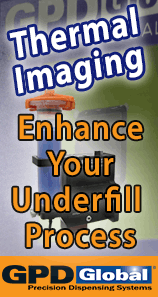Printed Circuit Board Assembly & PCB Design Forum
SMT electronics assembly manufacturing forum.
- SMTnet
- »
- Electronics Forum
- »
- Nozzle size
Nozzle size
![]() Question:
I am going to start placing 3mm x 3mm plastic smt...
- Sep 06, 2002
by
Tony
Question:
I am going to start placing 3mm x 3mm plastic smt...
- Sep 06, 2002
by
Tony
![]()
![]()
![]() What type of machine are you using?
We have a panasonic MPA...
- Sep 12, 2002
by
Stephen
What type of machine are you using?
We have a panasonic MPA...
- Sep 12, 2002
by
Stephen
![]()
![]()
![]() I amusing a Fuji CP3. The part data seems to be the easiest ...
- Sep 12, 2002
by
Tony
I amusing a Fuji CP3. The part data seems to be the easiest ...
- Sep 12, 2002
by
Tony
![]()
![]()
![]() It's been years since I worked with a Fuji. I only once res...
- Sep 12, 2002
by
Stephen
It's been years since I worked with a Fuji. I only once res...
- Sep 12, 2002
by
Stephen
![]()
![]()
![]() There seems to be less play in the pocket than with other ...
- Sep 12, 2002
by
Tony
There seems to be less play in the pocket than with other ...
- Sep 12, 2002
by
Tony
![]()
![]()
![]() Hi Tony,
as you might guess, a Nozzle Mfg. has stepped into...
- Sep 12, 2002
by
sales
Hi Tony,
as you might guess, a Nozzle Mfg. has stepped into...
- Sep 12, 2002
by
sales
![]()
![]()
![]() I guess no one at ECD reads this forum. They make a clip-on...
- Sep 13, 2002
by
Stephen
I guess no one at ECD reads this forum. They make a clip-on...
- Sep 13, 2002
by
Stephen
![]()
![]()
![]() Hey Thanks!
Yep, they are pricey but I think it would be a ...
- Sep 13, 2002
by
Tony
Hey Thanks!
Yep, they are pricey but I think it would be a ...
- Sep 13, 2002
by
Tony
![]()
Tony
- SMTnet
- »
- Electronics Forum
- »
- Nozzle size






